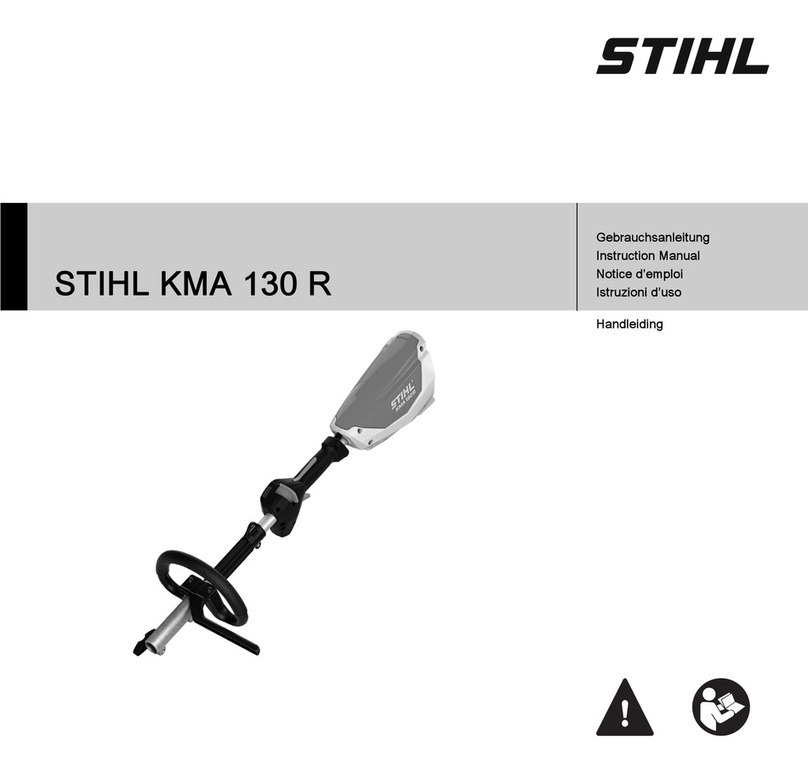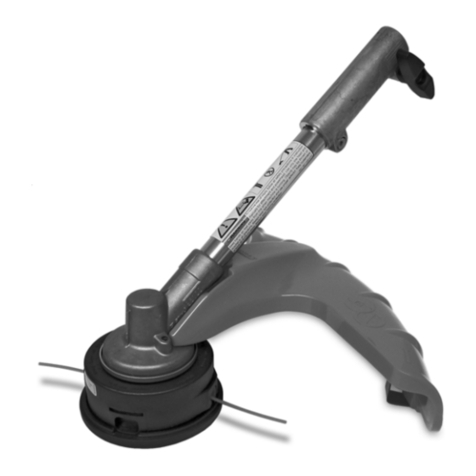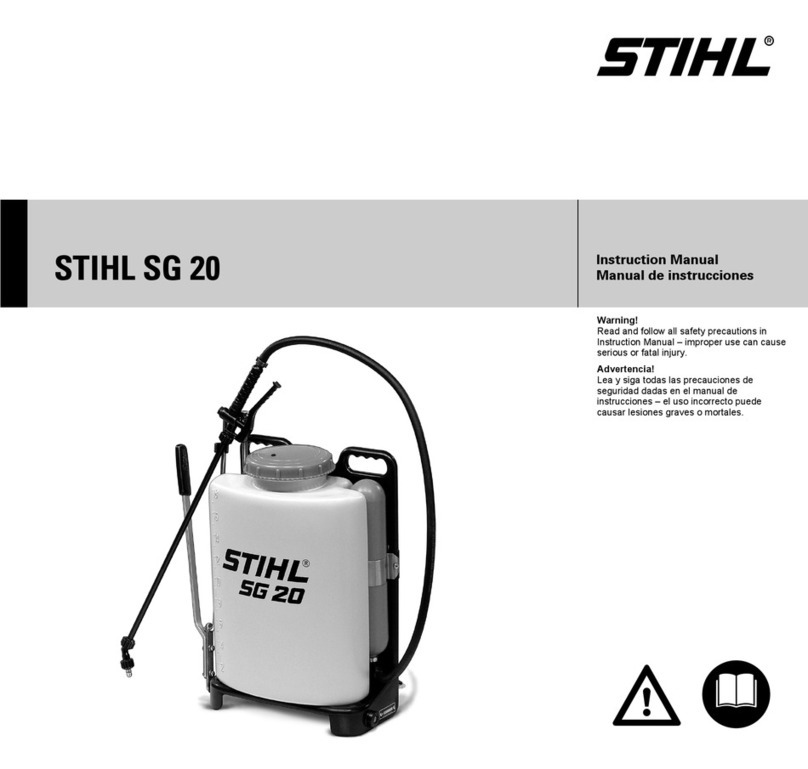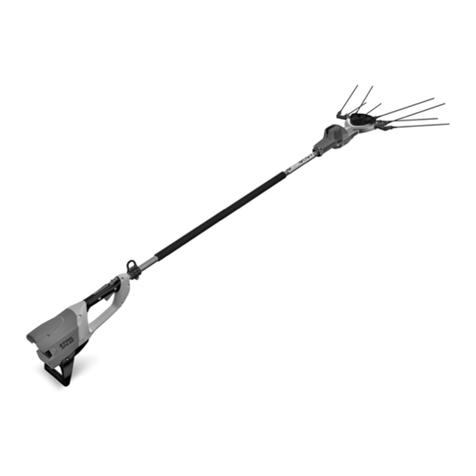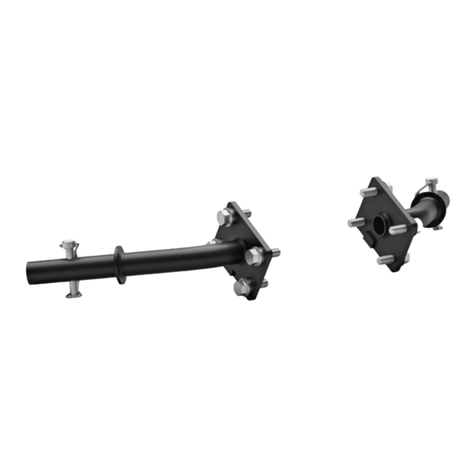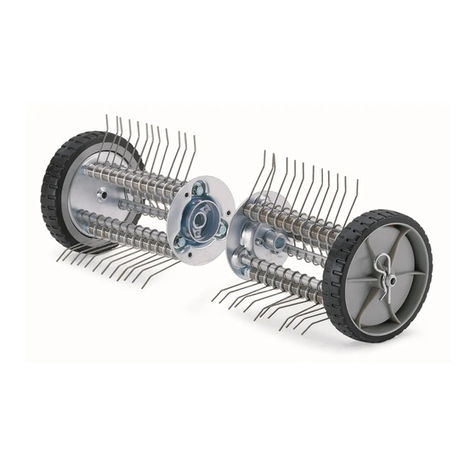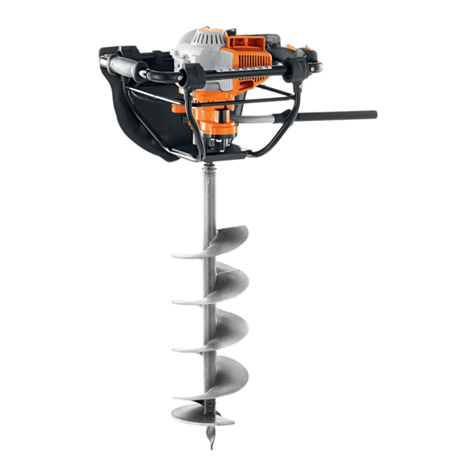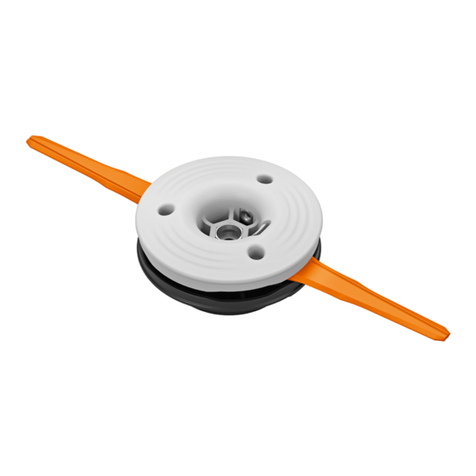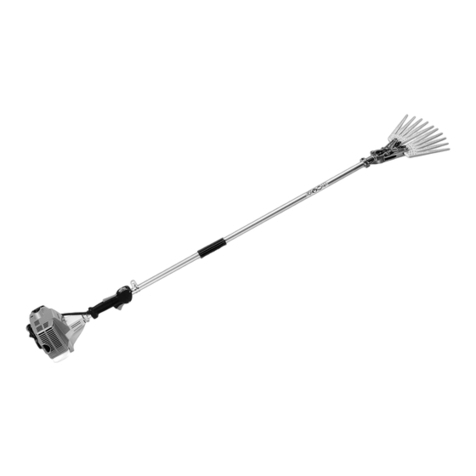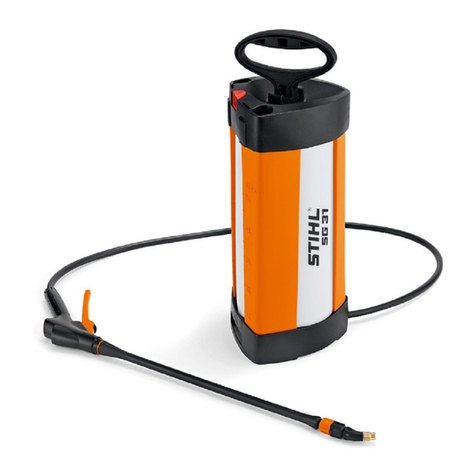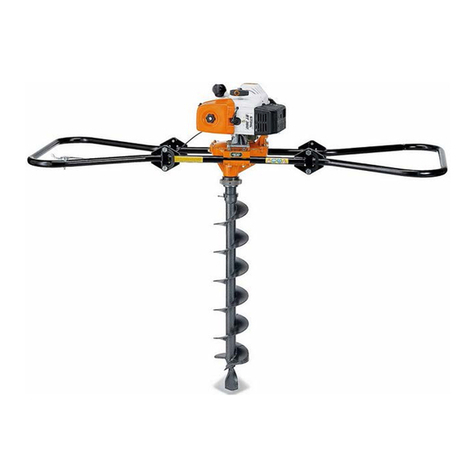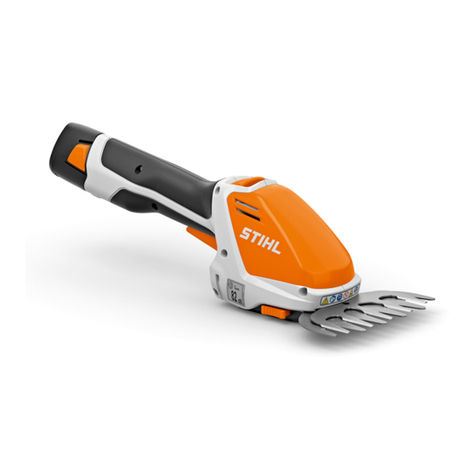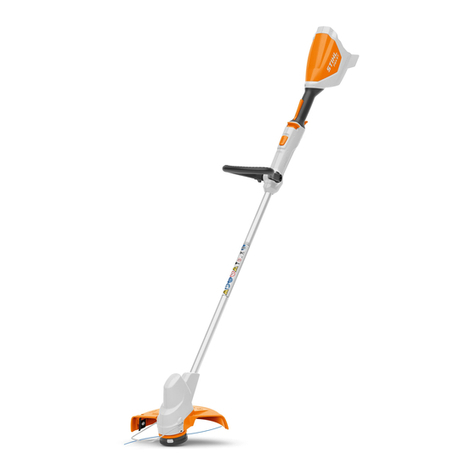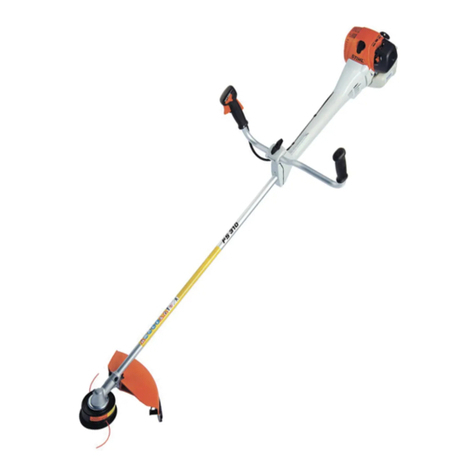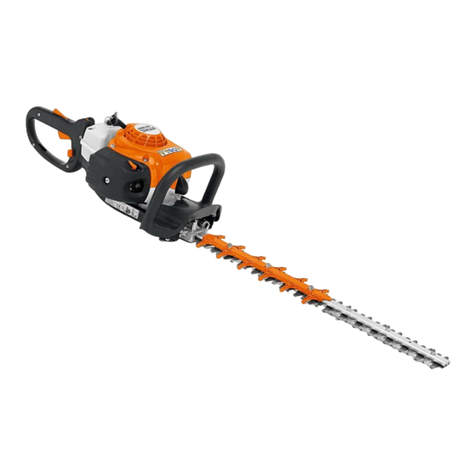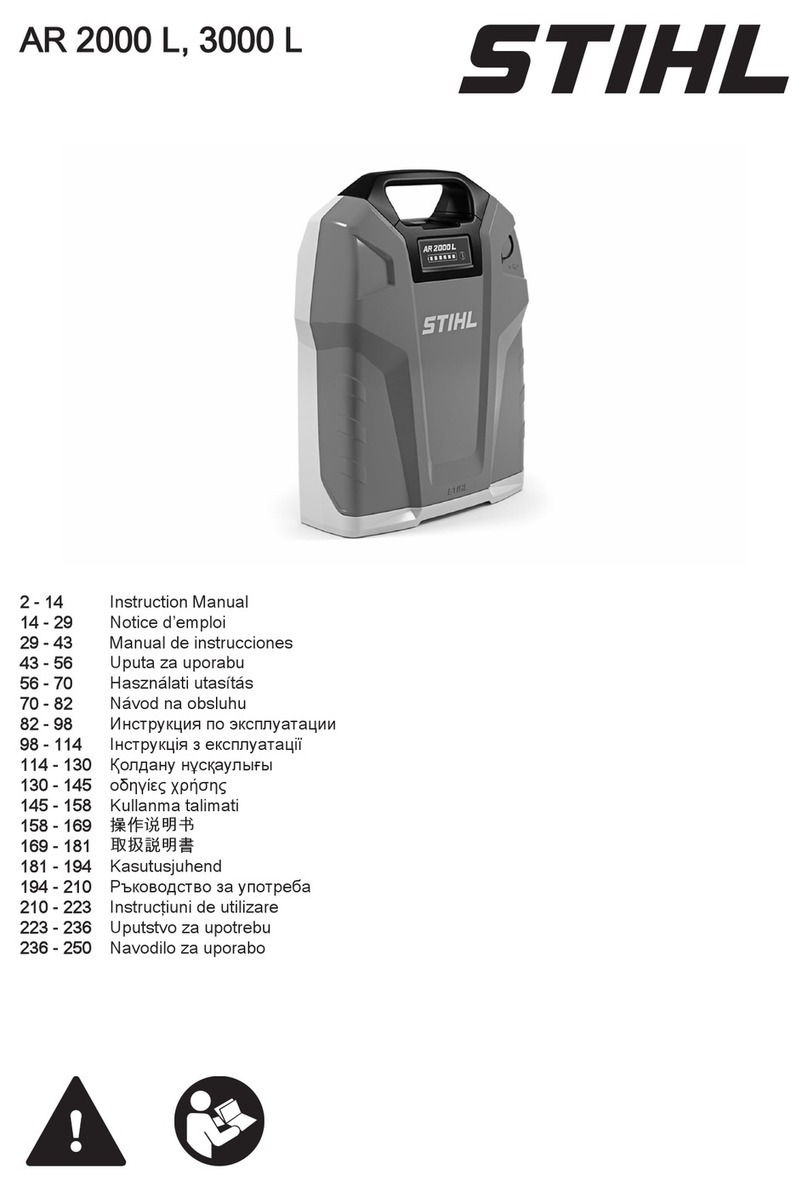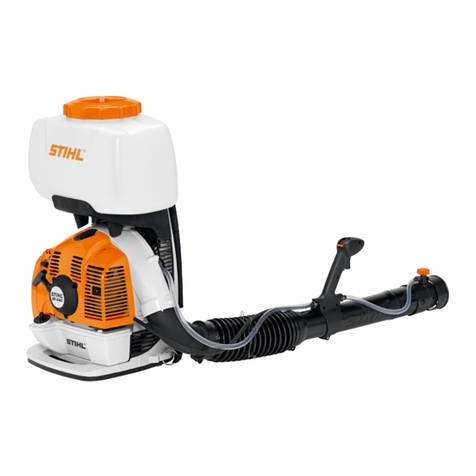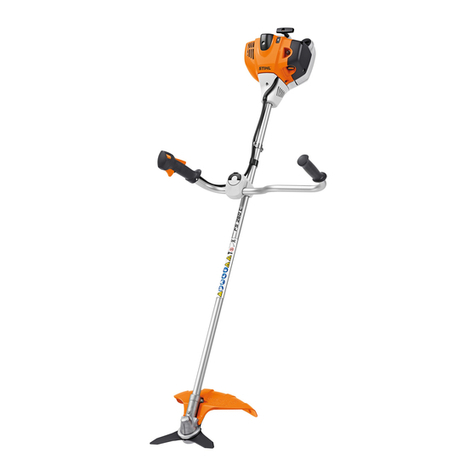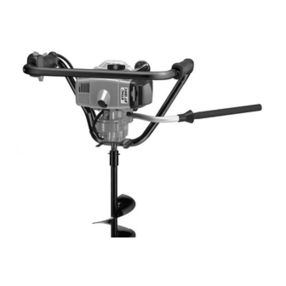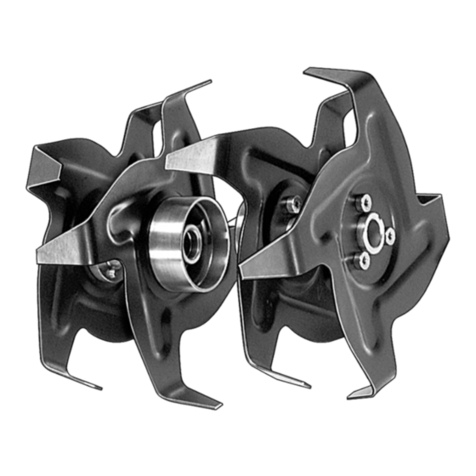
FS 94 R
English
7
When mowing in high shrubbery, under
shrubbery and hedges: Hold the cutting
tool at a working height of at least 15 cm
– avoid risks to animals.
Always shut off the engine before
leaving the unit unattended.
Examine the cutting attachment
periodically at short intervals and as
soon as you note any noticeable
changes:
–Stop the engine, hold the machine
securely, allow the cutting
attachment to come to a stop
–Check condition and secure fitting;
watch out for cracks
–Ensure that the cutting blades are
sharp
–Replace damaged or blunt cutting
attachments immediately, even in
the event of minor hairline cracks
Clean grass and plant residue off the
cutting attachment mounting at regular
intervals – remove any build up of
material from the cutting attachment and
deflector.
To reduce the risk of injury, shut off the
engine before replacing the cutting
attachment.
Do not continue using or attempt to
repair damaged or cracked cutting
attachments by welding, straightening or
modifying the shape (out of balance).
Particles or pieces may come off and hit
the operator or a bystander at a high
speed – risk of most severe injuries!
If a rotating cutting attachment touches a
rock or another hard object, sparks may
be generated which may possibly ignite
combustible materials. Also dried-out
plants and brushwood are combustible,
above all in hot and dry weather. If there
is a risk of fire, do not use cutting
attachments in the vicinity of
combustible materials, dried-out plants
or brushwood. It is mandatory that you
ask the responsible forestry office about
any fire hazard conditions.
Using mowing heads
Extend the cutting attachment deflector
with the attached parts specified in the
User Manual.
Only use a deflector with a properly fitted
blade, to limit the mowing line to the
permissible length.
To adjust the mowing line in manually
adjustable mowing heads, always
switch off the engine first – risk of injury!
Misuse with mowing lines that are too
long reduces the working speed of the
engine. The constant slipping of the
clutch causes overheating and damage
to important components (e. g. clutch,
plastic housing parts) – e. g. due to the
cutting attachment rotating during idling
– risk of injury!
When using metal cutting attachments
STIHL recommends the use of original
STIHL metal cutting attachments. These
have been optimized for the machine
and the user’s requirements.
Metal cutting attachments rotate very
fast, generating forces acting on the
attachments and on the cuttings.
Metal cutting attachments must be
sharpened in regular intervals in
accordance with the instructions.
Unevenly sharpened metal cutting
attachments generate an imbalance
which may cause extreme loads on the
machine – risk of breakage!
Dull or improperly sharpened cutting
edges can put a higher load on the
cutting attachment and increase the risk
of injuryfrom cracked or broken parts.
After each contact of the metal cutting
attachment with hard objects (e.g.
stones, rocks, metal parts), check it for
damage (e.g. tears and deformation).
Burrs and other visible accumulated
material must be removed since it may
come loose at any time while the
machine is running and then be ejected
– risk of injury!
To reduce the above-specified risks
involved in operating a metal cutting
attachment, ensure that the diameter of
your metal cutting attachment is not too
big. Also, the attachment must not be
too heavy. It must be made of high-
quality materials and have a suitable
geometry (shape, thickness).
A metal cutting attachment not made by
STIHL must not have a different weight,
thickness, shape or a larger diameter
The gearbox gets hot
during operation. Never
touch the gearbox – risk
of burns!
